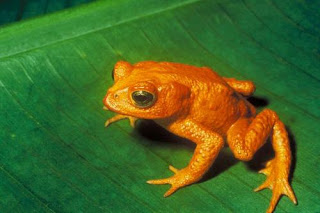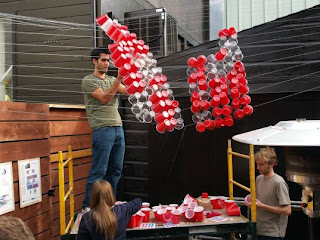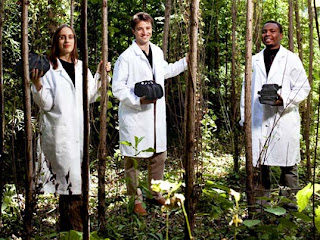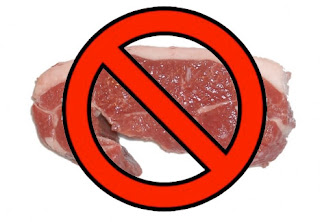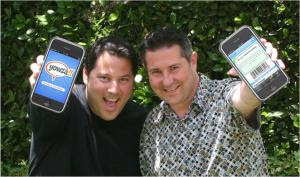
This is a great way to use up those colours of organic lipstick you are not very fond of. It is possible to create new colours. Recycle the small left-over organic lipstick that is left in the bottom of the tube or pot.
Petroleum jelly has such a wealth of uses (including a base for recycled lipstick).It is nice to know how to prepare your own healthful non-petroleum substitute.
Many over-the-counter salves, oinments, liniments and cosmetics have petroleum as a base. We all know crude oil, sometimes called petroleum, is a fossil fuel that was produced deep in the earth through a process that took millions of years to complete.
Recycling Organic Lipstick into LusciousLipgloss
Only use certified organic lipstick and non-petroleum jelly - Why eat chemicals?
Women are now aware that they can ingest, at worst 12 kilograms of lipstick and chemicals in one lifetime. That is why you can have a beautiful smile without the worry of chemicals, lead, aluminuim, artificial colourings, petroleum jelly,preservatives and sunscreen.
Keep a record of what organic lipstick you use and how much in case it turns out to be a really beaut colour. You can control the hardness of the product by using less or more beeswax acording to preference. It it doesn't turn out quite right, simply toss the experiment back into the top of the double boiler and melt it down again. Add a little more of whatever you need. Have fun!
Recycling Lipstick
1 tablespoon non-petroleum jelly (recipe below)
organic lipstick the size of a small pea
1/2 teaspoon grated beeswax
In the top of a double boiler, over barely simmering water, melt beeswax and jelly together until both are well combined.
Add the piece of organic lipstick.
Continue to add small amounts (if necessary) until the desired colour is achieved.
Pour into small lip balm tub or tube and allow to set.
You can improve the healing quality of this by adding the contents of one 400 IU natural capsule of Vitamin E.
If you are doing a few, for easier pouring, use a rubber band to hold tubes together. Then they stand upright easily. Use a Soap Crafters dropper cap or Pipette to fill them. Keep filling until they are a little overfilled. This gives each lip gloss a rounded top and not a sunken in one. After a couple of hours they will be cool, put on caps and clean up to label. They are ready to use!
An Easy Lip Gloss
Follow directions as for lip gloss above and combine:
1/2 tablespoon olive / organic coconut oil
1/2 tablespoon sweet almond oil
pea-size piece of organic lipstick
1 teaspoon grated beeswax
200 IU natural vitamin E capsule (as a preservative)
The difference between these two Lip Glosses is a matter of consistency and which one you prefer.
Chocolate Lip Balm
1½ oz grated beeswax
1 oz organic cocoa butter
1½ oz shea butter
2 ozs. sweet almond oil / organic coconut oil
1-2 teaspoons flavour oil - peppermint EO / lavender EO or combination / organic vanilla powder
recycle chocolate colour lipstick or use 2 tablespoons organic cocoa powder
400 IU vitamin e oil capsule
In a very small pan, add the beeswax and melt over the lowest setting. (or use a double boiler or a steamer with ingredients in a glass jug).
Once melted add the cocoa butter chunks and shea butter, let melt, and
then add the sweet almond oil or coconut oil, lipstick or cooa pwder and vanilla powder. Heat through. Add the openedVitamin E oil capsule.
Remove from stove and pour into a glass measuring cup for easy pouring into lip balm containers.
Add the flavour oil, or if you would like to make more than one flavour with this recipe, separate into different glass jars or cups and then add the
flavour. If the mixture starts to harden, place in the microwave for a few seconds to re-melt and then pour.
Recipe makes 6 ozs. Store in 'fridge.This lip balm leaves a smooth, non-greasy feeling and will not build up or cake on your lips.
Use Leftover Lipstick
2 teaspoons beeswax
2 tablespoons, sweet almond oil or coconut oil
5 drops essential oil (such as orange, lemon, grapefruit, tangerine, coconut or mint)
2 drops vitamin E capsule
(optional: to tint, up to 1/4 teaspoon lipstick)
 Melt the oil and beeswax together. Remove from heat. If colouring, stir in the lipstick. When the mixture has cooled to lukewarm, stir in essential oil and the vitamin E. Transfer to a small container.
Melt the oil and beeswax together. Remove from heat. If colouring, stir in the lipstick. When the mixture has cooled to lukewarm, stir in essential oil and the vitamin E. Transfer to a small container.
Stir occasionally while cooling.If a thicker gloss is desired, increase the amount of beeswax. (Experiment with other additions such as organic cocoa / carob powder, crushed peppermint, cocoa butter, vanilla bean, oil of cinnamon, oil of camphor or eucalyptus for soothing chapped lips, wheat germ oil, etc.
Add oil-based ingredients to the oil phase, and water-soluble ingredients to the water phase).
(Petroleum jelly -aka Vaseline)
Petrolatum is found in one of every 14 products on the market (7.1 percent of the products assessed by EWG), including 15 percent of all lipstick and 40 percent of all baby lotions and oils. FDA restricts petrolatum in food to no more than 10 parts per million, and requires petrolatum used in food packaging or drugs to meet impurity restrictions for PAHs (21 CFR 178, 21 CFR 172.880).
But the agency allows any amount of petrolatum of any purity in personal care products, many of which are applied directly to the lips and swallowed.
Manufacturers would find no legal impediments to using the same unregulated petrolatum in personal care products as can be used in shoe polish.
Among the studies linking the petrolatum impurity PAHs to breast cancer is a Columbia University study in which researchers found that the breast tissue of women with breast cancer was 2.6 times more likely to contain elevated levels of PAHs bound to DNA (called DNA adducts) than the breast tissue of women without breast cancer (Rundle et al. 2000). The National Toxicology Programs finds that some PAHs are reasonable anticipated to be human carcinogens, and the State of California lists a number of PAHs as carcinogens in its Proposition 65 program (NTP 2002, OEHHA 2004).
Petrolatum is listed as a probable human carcinogen in the European Union's Dangerous Substances Directive (UNECE 2004).
http://www.health-report.co.uk/petroleum_petrolatum_health_concerns.htmNon-Petroleum Jelly
This is a great multi-use formula.Protects, heals scrapes and rashes.Use for a little gloss to your lips.Dab some on fingers and toenails to impart luster and shine. As a base for homecrafting cosmetic,beauty and skincare products.
A softer or firmer gel can be made by changing the amount of beeswax used. Try the recipe as written, then decide if it suits or if you would like to change the next batch to a different consistency. For a softer gel, use 1 oz. of beeswax. For a firmer gel, use 1½ oz. of beeswax. For a very soft gel - more like an ointment in consistency - use 1/2 oz of beeswax.
Combine 1¼ oz. grated beeswax and 3/4 cup sweet almond oil (or organic coconut or olive oil) in the top of a double boiler. With water in the lower pan at a simmer, thoroughly melt ingredients together. Remove from heat and pour into suitable container(s). This recipe will fill two 3½ to 4 oz. containers. This allows one jar to be used 'as is' and the other to be used as a base for products you wish to make.
Optional - add 12 drops of grapefruit seed extract as a natural preservative.- Will keep for one year.To make a lighter consistency, can mix with a hand beater after heating.
Enjoy and happy handcrafting! -ecobites
 The Journal of the American Medical Association has published a report conducted by the University of Chicago that estimates nearly 10 percent of U.S. carbon dioxide emissions come from the health care industry. Findings reveal that hospitals are the number one polluter with pharmaceuticals at a close second.
The Journal of the American Medical Association has published a report conducted by the University of Chicago that estimates nearly 10 percent of U.S. carbon dioxide emissions come from the health care industry. Findings reveal that hospitals are the number one polluter with pharmaceuticals at a close second.




 Melt the oil and beeswax together. Remove from heat. If colouring, stir in the lipstick. When the mixture has cooled to lukewarm, stir in essential oil and the vitamin E. Transfer to a small container.
Melt the oil and beeswax together. Remove from heat. If colouring, stir in the lipstick. When the mixture has cooled to lukewarm, stir in essential oil and the vitamin E. Transfer to a small container.




